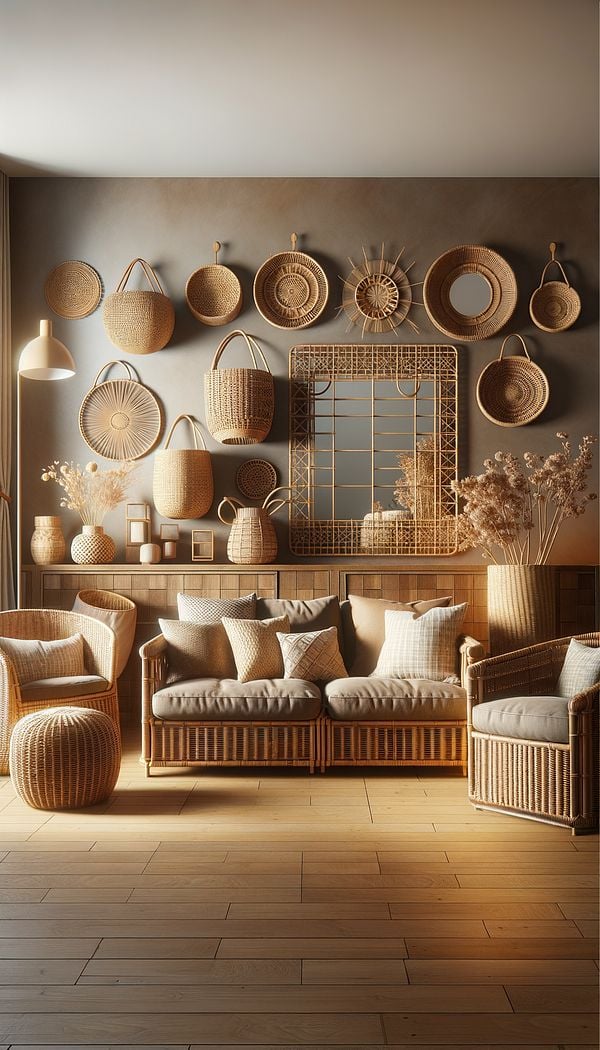What is Rattan?
Rattan is a natural, renewable material often used in furniture and decor.
Description
Rattan is a term that refers to about 600 different species of palm trees, primarily found in Southeast Asia, Africa, and Australia. It’s a flexible, durable vine that grows in the shape of a pole, and can range in size from a few millimeters up to a few inches in diameter. Unlike bamboo, which is hollow, rattan is solid, making it a very sturdy material for furniture construction.
Rattan's unique properties, including its flexibility and durability, make it an ideal material for crafting furniture and decorative items. When harvested, the vine can be steamed and bent into a variety of shapes, then allowed to cool and set. This process makes rattan highly versatile, allowing for a wide range of design styles from traditional to contemporary. Once formed, rattan can be left in its natural state, varnished, or painted to suit any design needs.
In addition to its aesthetic appeal, rattan is also valued for its sustainability. As a fast-growing vine, it's a more renewable resource than some other materials used in furniture making, contributing to eco-conscious interior design. Its lightweight nature also makes rattan pieces easy to move and rearrange, offering flexibility in space planning and layout.
Usage
Rattan is commonly used to make a variety of furniture pieces such as chairs, sofas, and tables, as well as decorative items like baskets, mirrors, and light fixtures. It's frequently chosen for its natural, earthy look that adds warmth and texture to an interior. Rattan furniture is especially popular in bohemian, tropical, and coastal design styles, though its versatility allows it to fit within a variety of other decors.
FAQs
-
Is rattan the same as wicker?
No, rattan and wicker refer to different things. Rattan is a material, while wicker is a technique. Wicker furniture can be made from rattan, as well as other materials like bamboo, willow, or synthetic fibers.
-
Can rattan furniture be used outdoors?
Yes, but it's important to note that natural rattan is better suited for covered outdoor spaces or indoor use to protect it from the elements. For fully exposed outdoor settings, synthetic rattan is a more durable choice.
-
How do you care for rattan furniture?
Rattan furniture should be dusted regularly with a soft cloth. For deeper cleaning, use a mild soap and water solution, making sure not to oversaturate the material. Avoid placing rattan furniture in direct sunlight for extended periods to prevent fading.
Practical Application
To incorporate rattan into your space, consider starting with a single statement piece, such as a rattan chair or coffee table. This adds texture and warmth to the room without overwhelming it. Mix and match rattan items with other materials, such as metal, glass, or fabric, to create a balanced look. For maintenance, keep rattan furniture clean and dry, and treat it with care to preserve its natural beauty for years to come.
-
Design Styles478 articles
-
Furniture Types599 articles
-
Decorative Objects240 articles
-
Materials & Textiles360 articles
-
Sustainability & Eco-Friendly Design69 articles
-
CassoneA large wooden chest, often richly decorated, used historically in Italy for storage and as a dowry trunk.
-
BacksplatA backsplat is the central piece of wood located on the back of a chair, running vertically to connect the seat to the top rail.
-
Mule ChestA mule chest is a traditional piece of furniture that combines the features of a chest and a drawer.
-
MohairMohair is a luxurious, durable fabric made from the hair of the Angora goat.
-
ChasedChased, in interior design, refers to a method of decorating by engraving or indenting a design onto hard surfaces.
